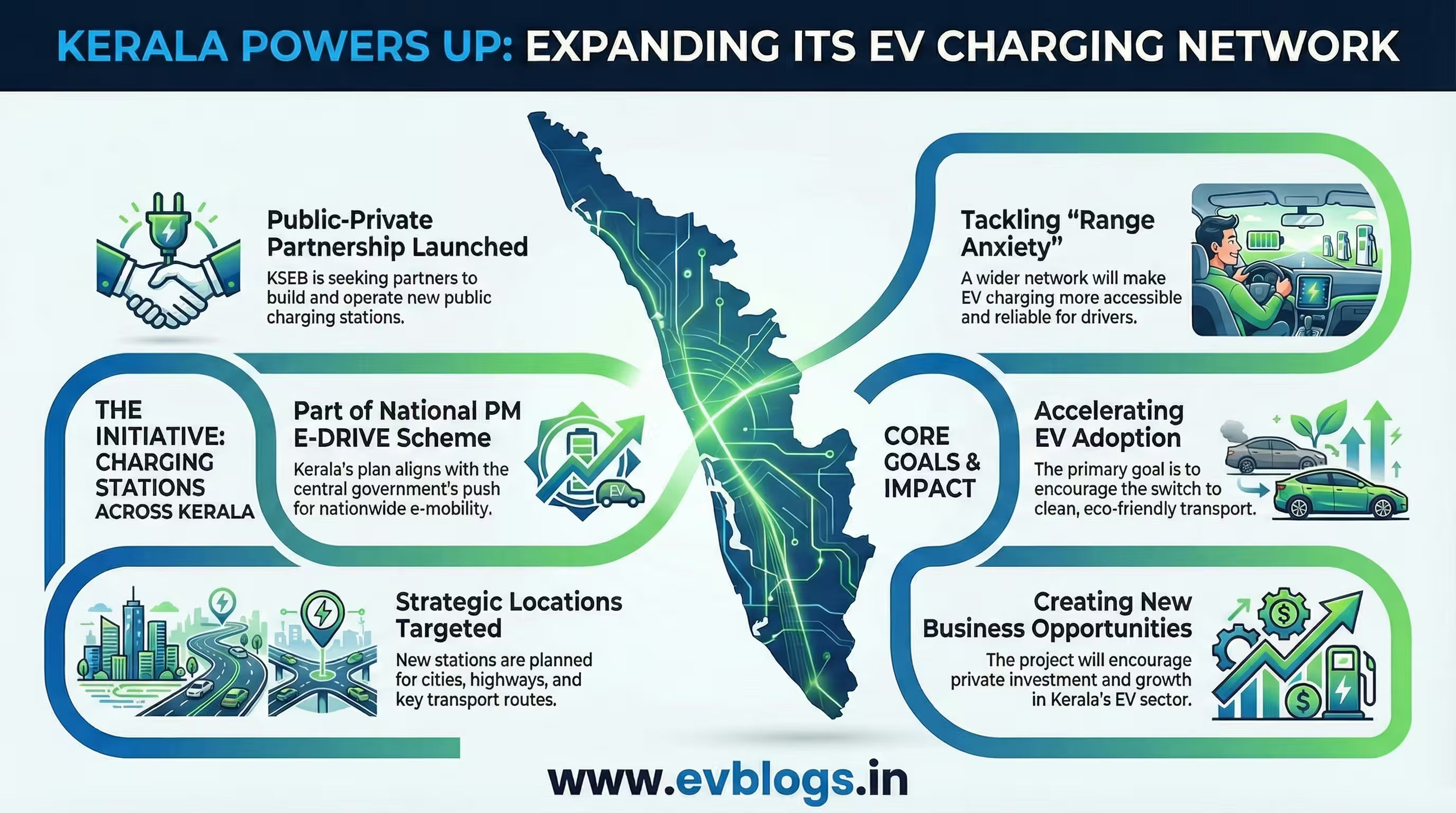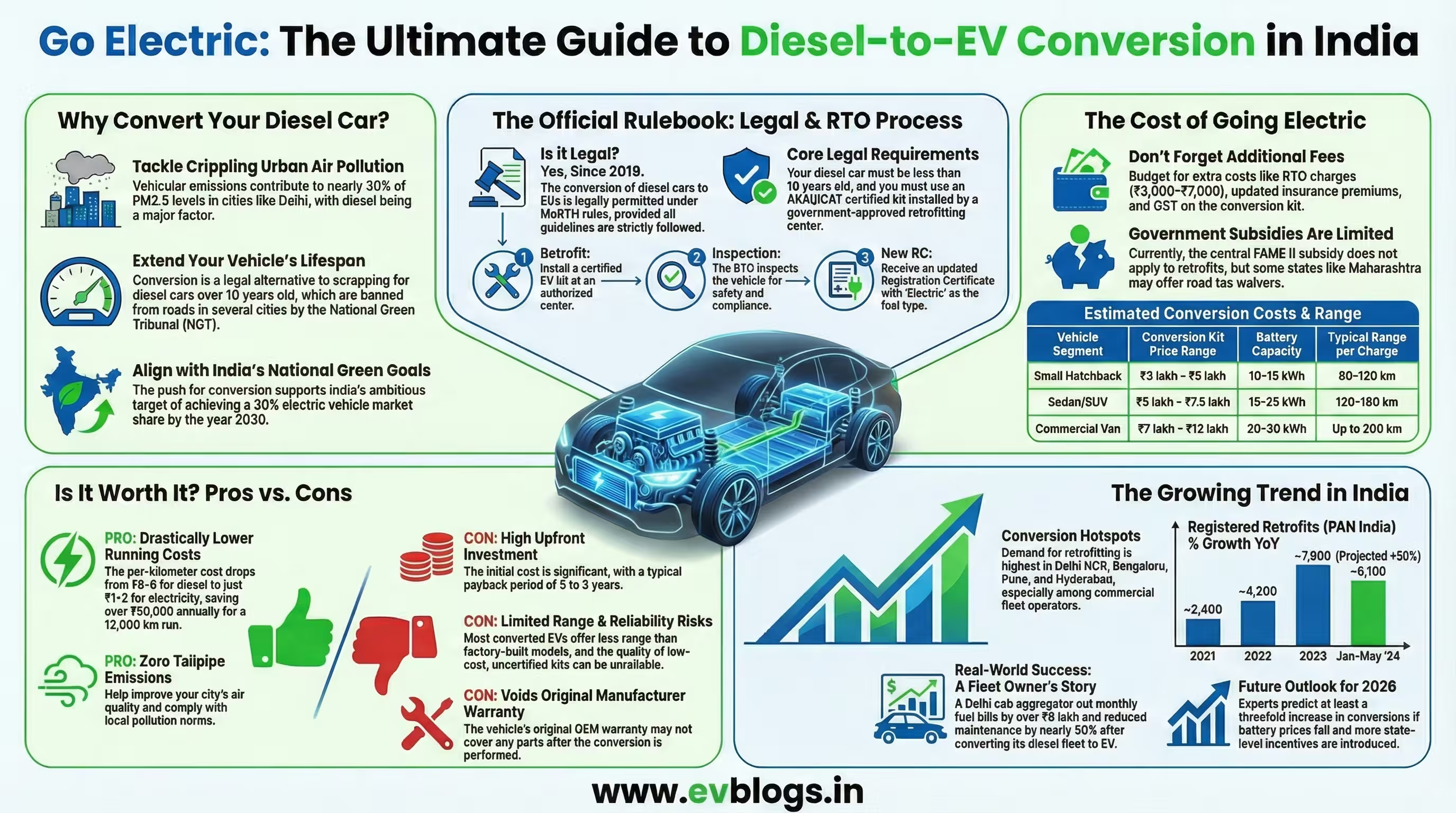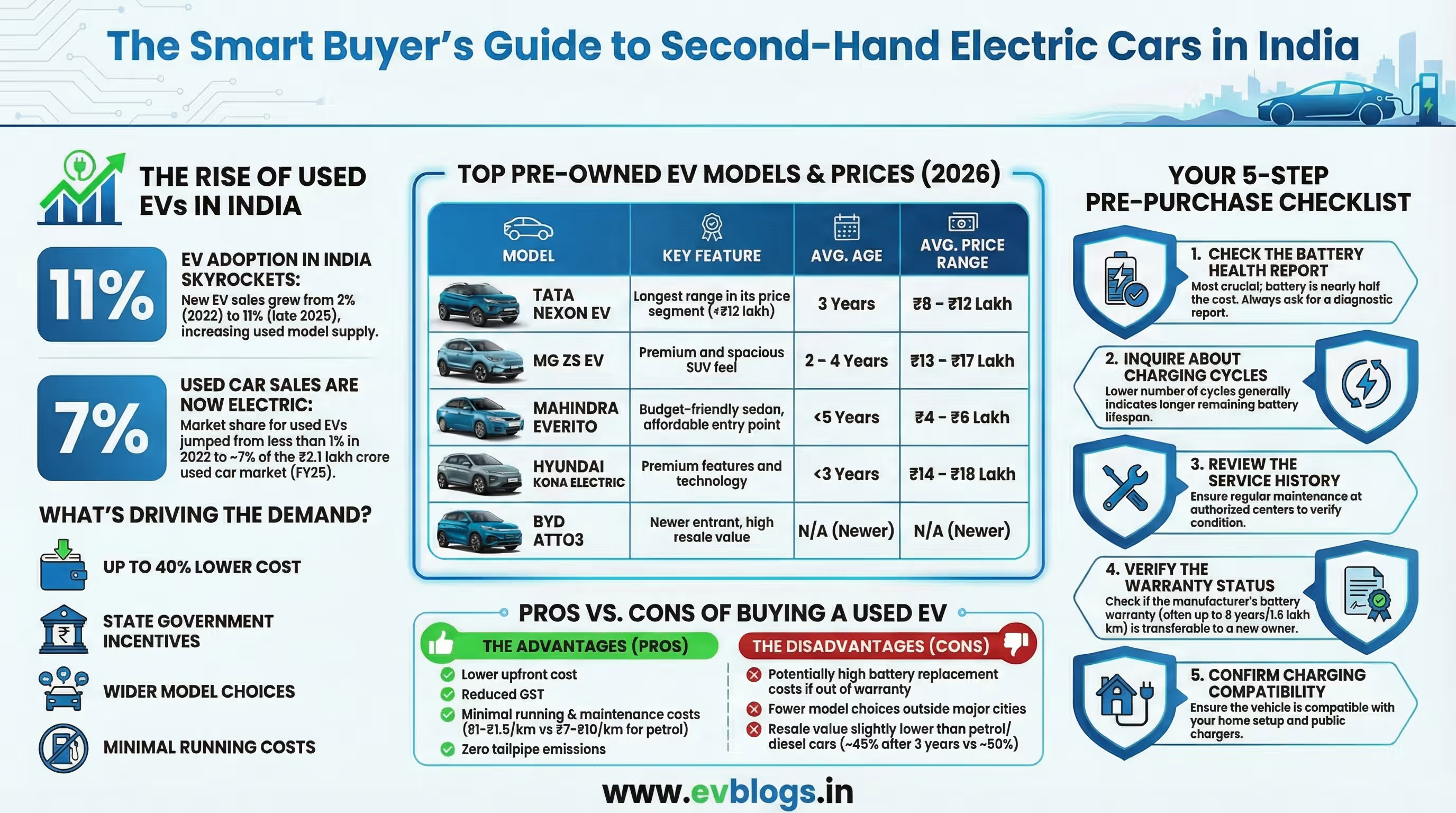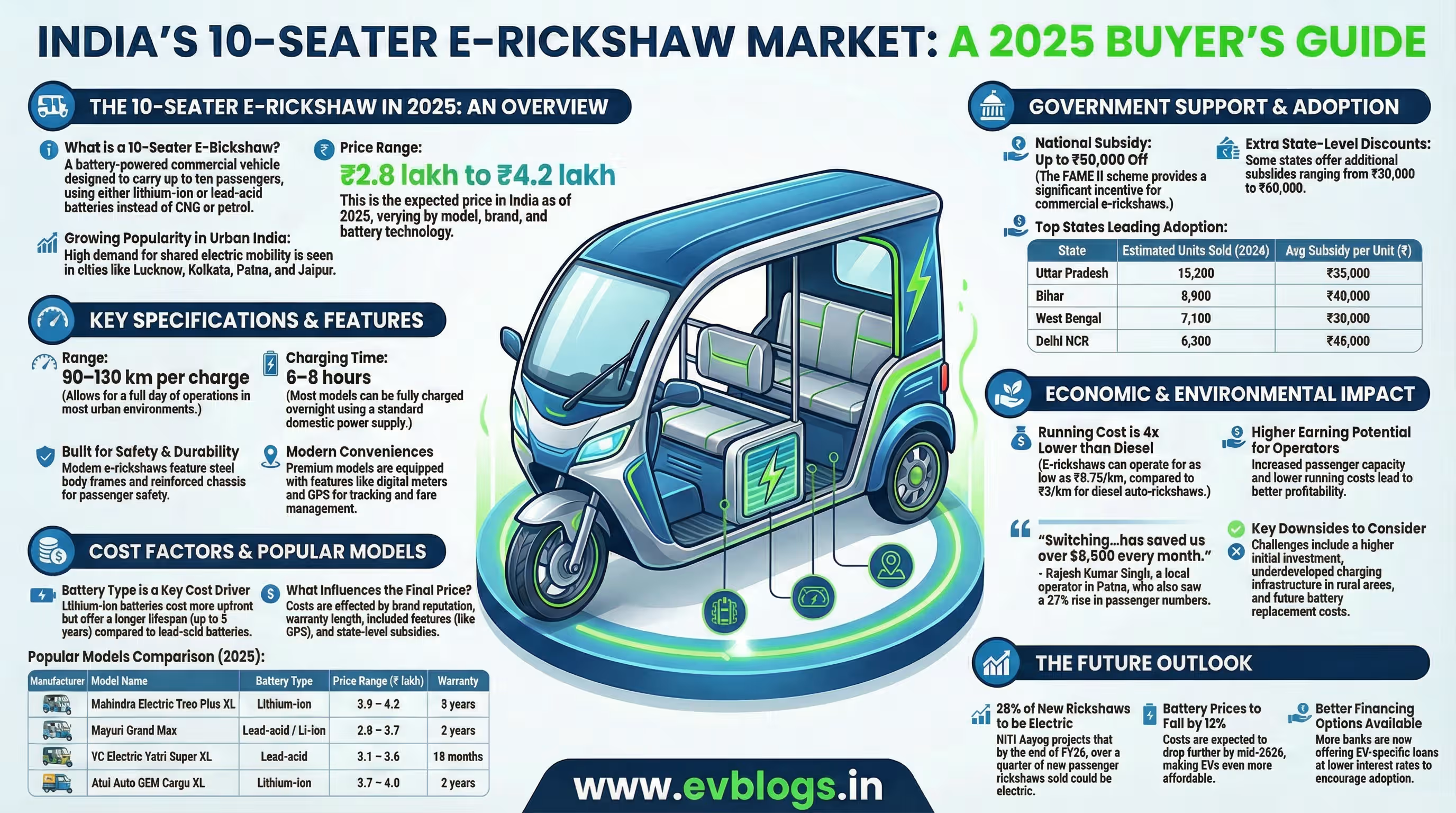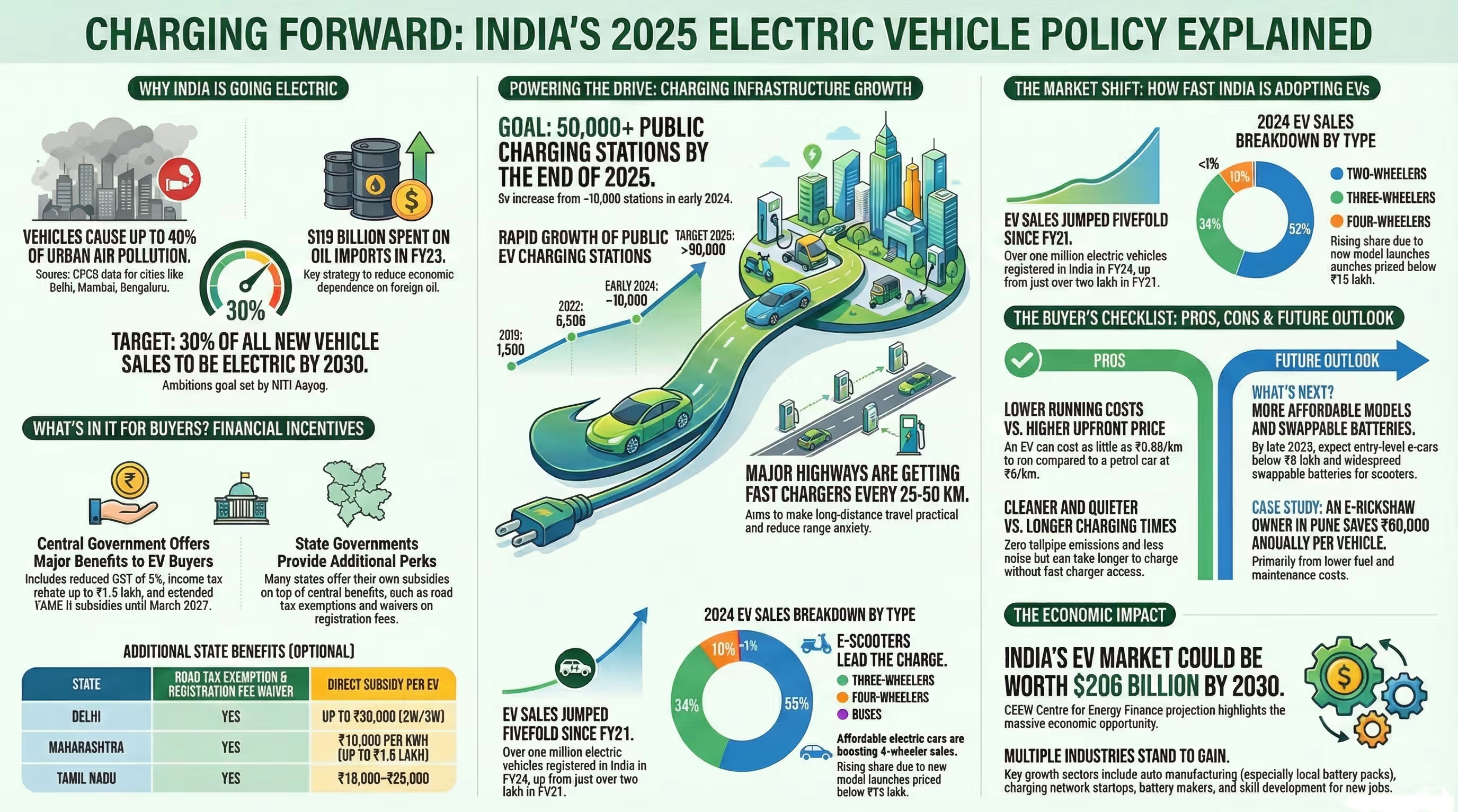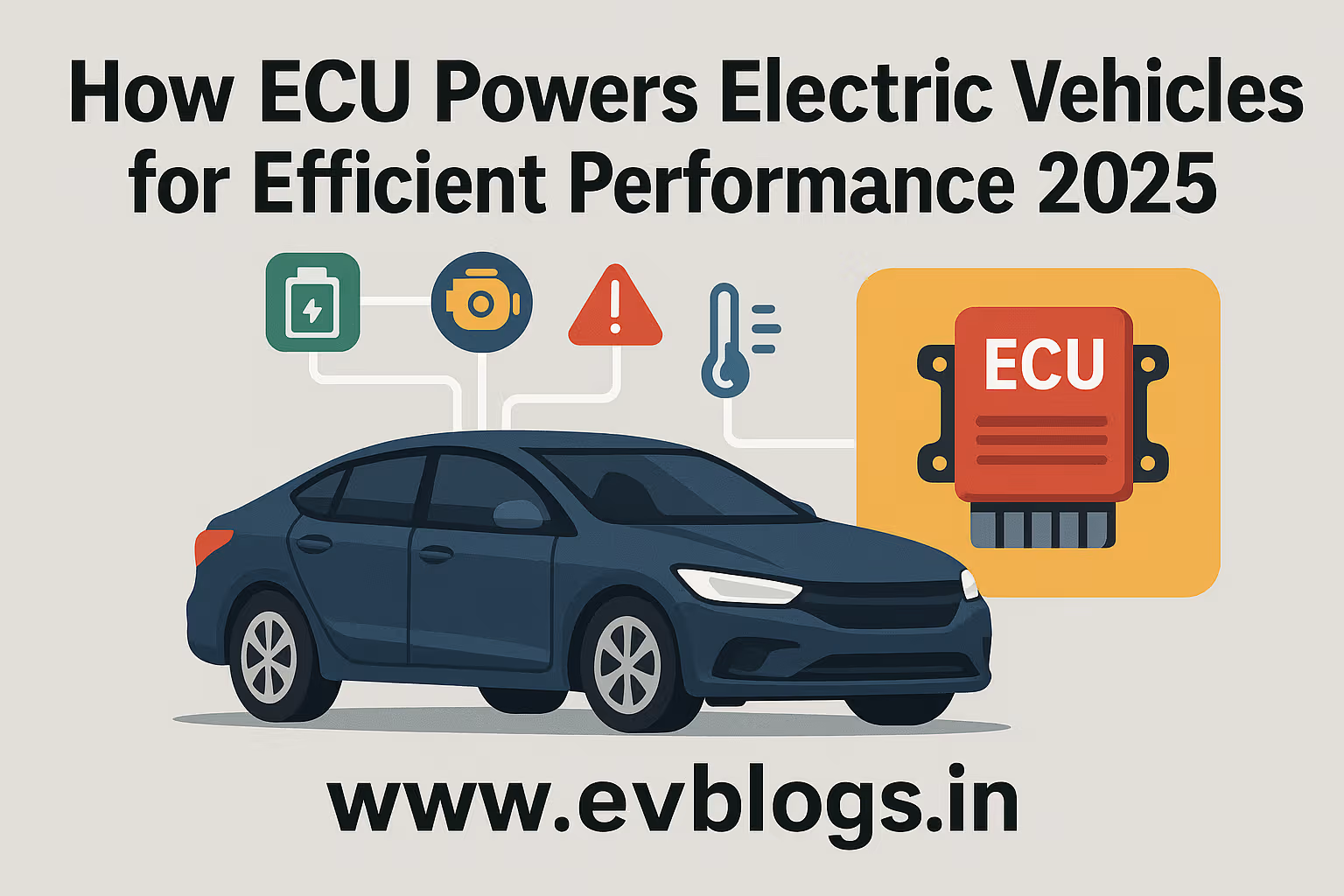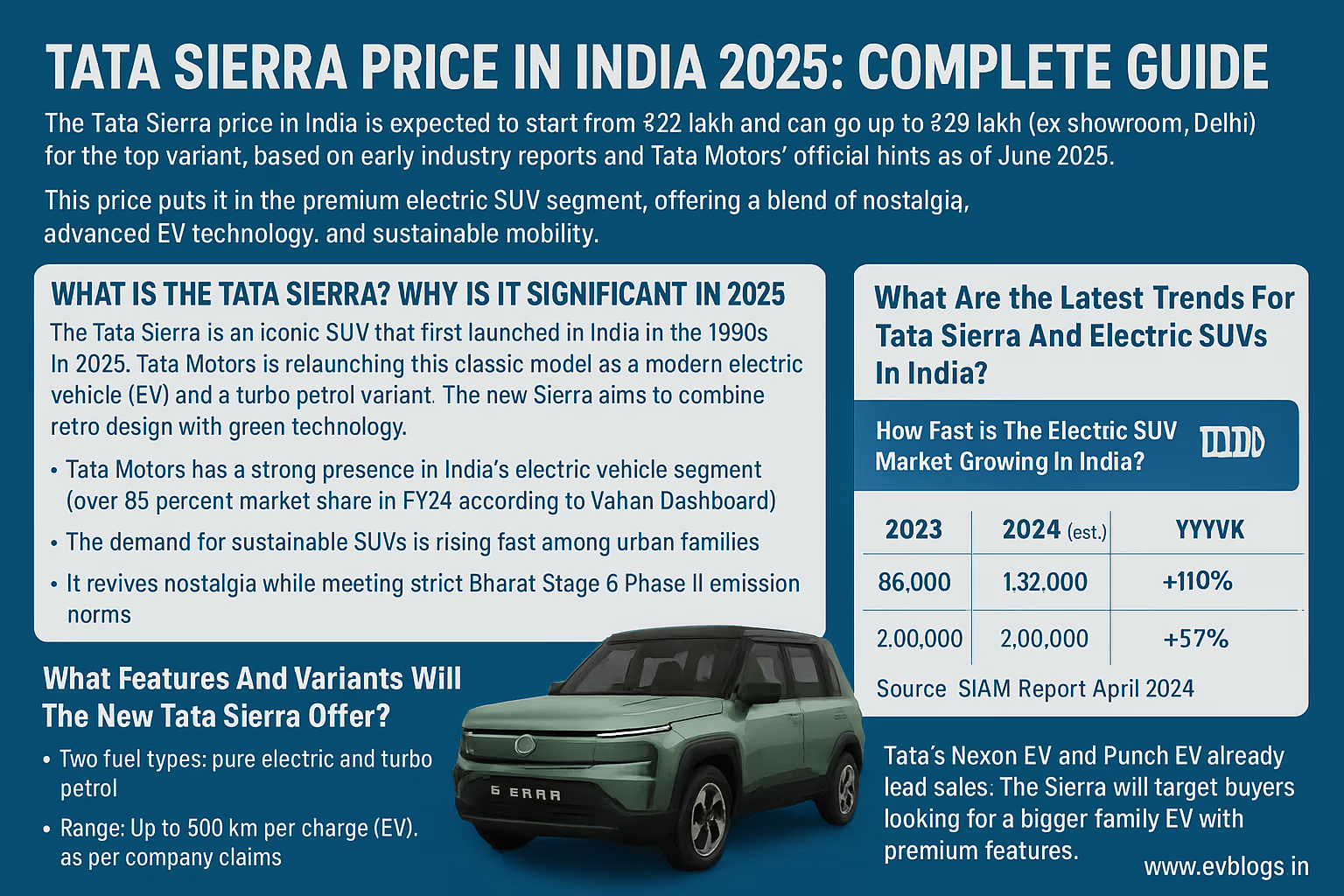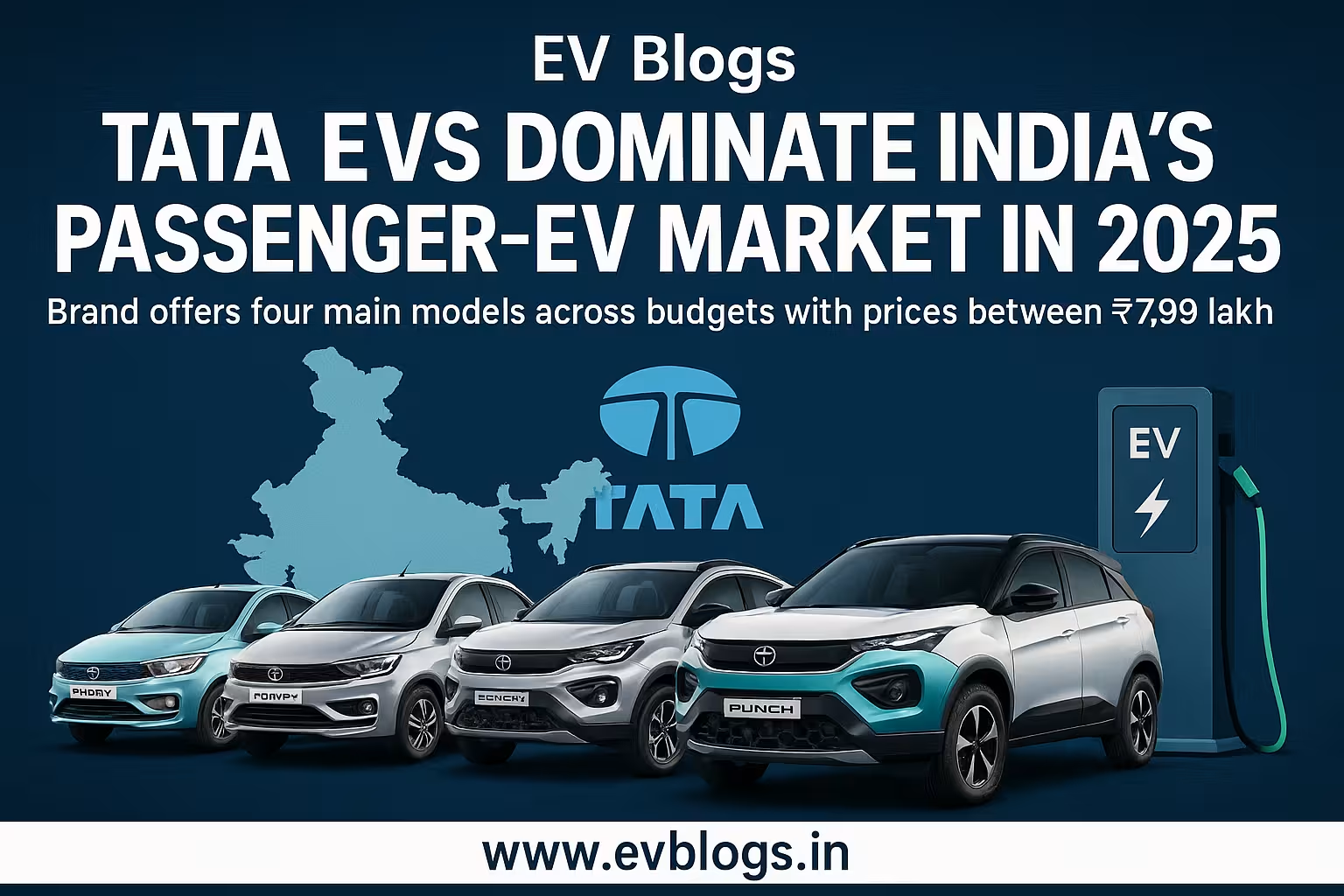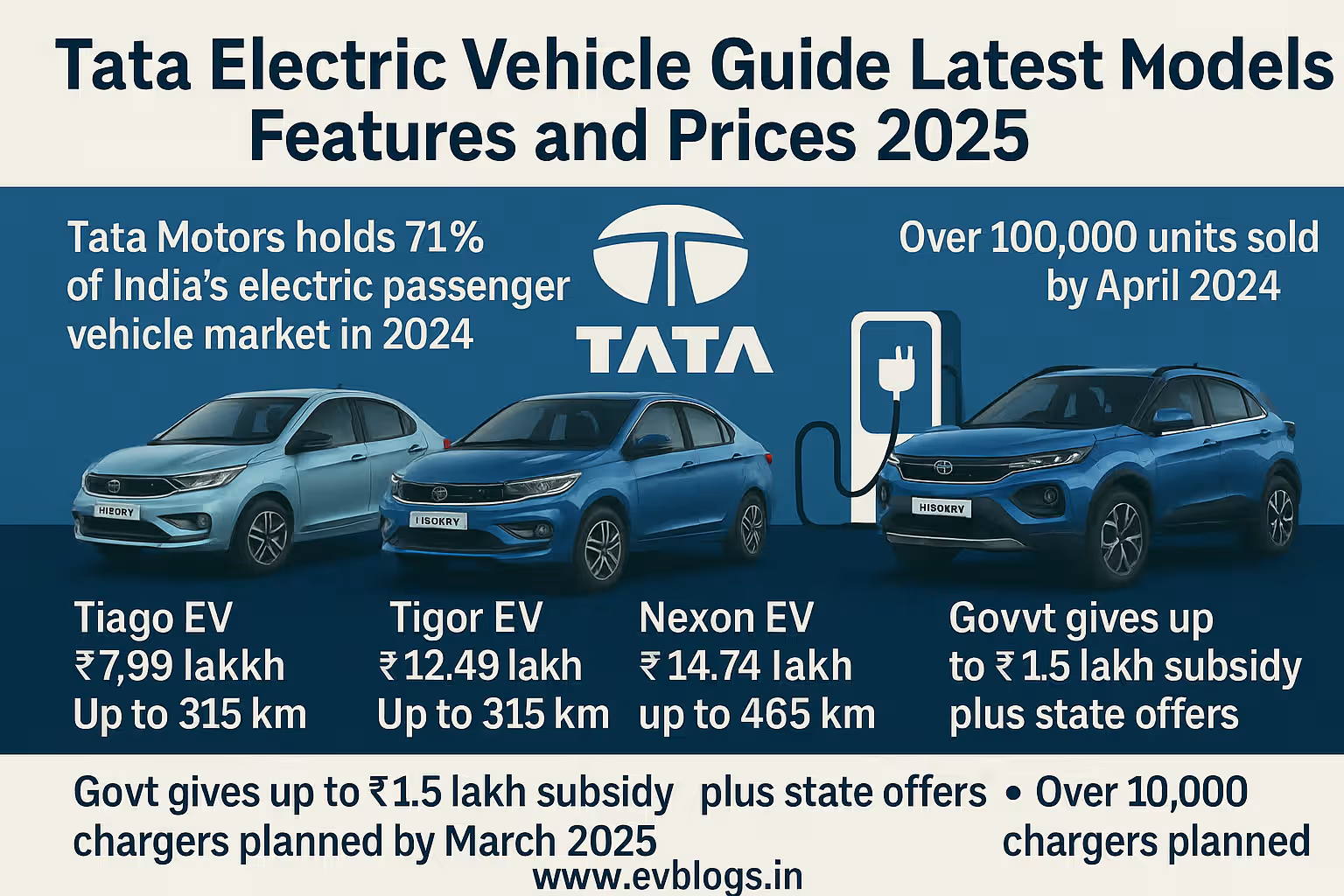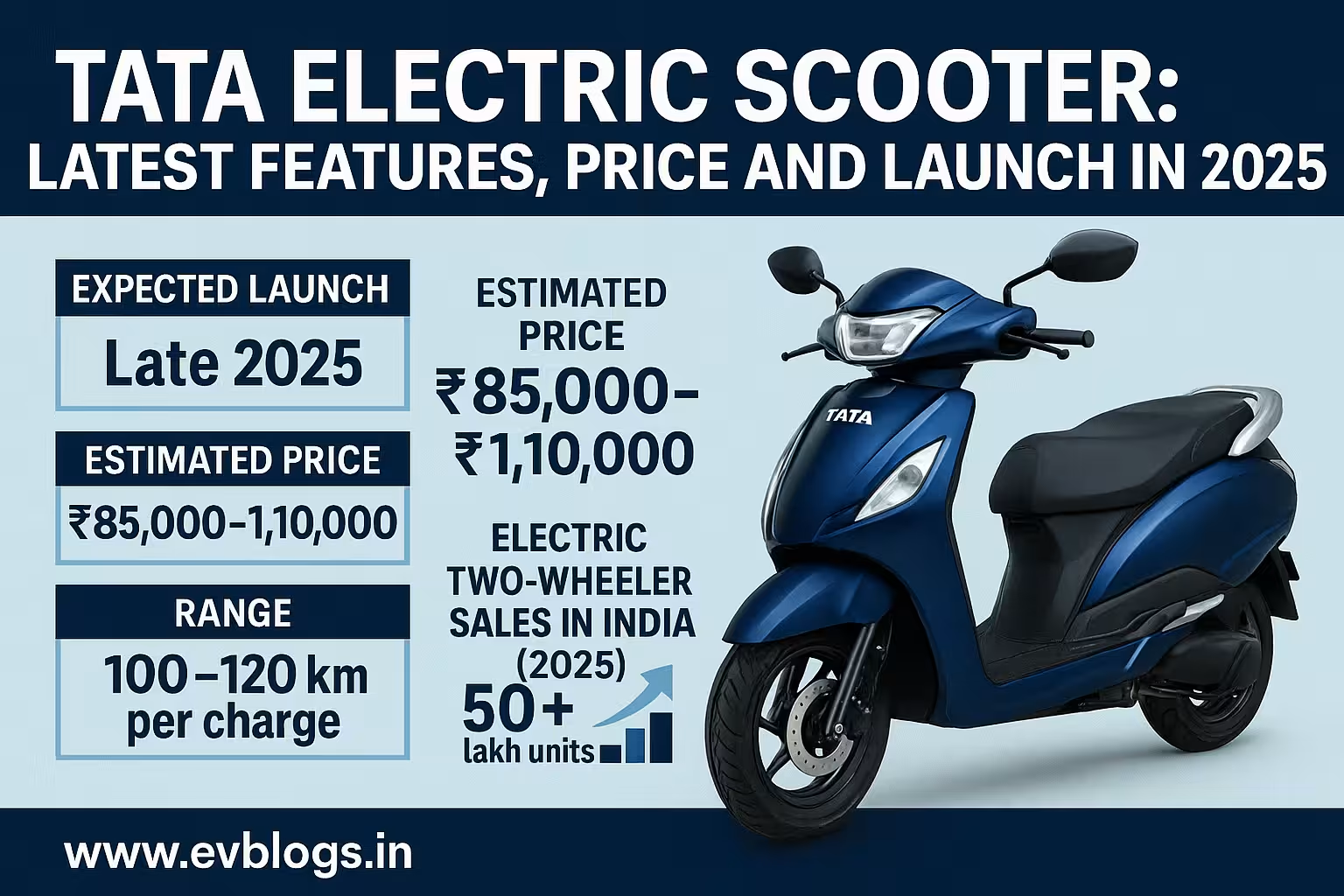Hedhvick Hirav
Hedhvick Hirav is a dedicated EV researcher and editor with over 4 years of experience in India’s growing electric vehicle ecosystem. Their contributions have been recognized in leading sustainability publications and automotive journals.
Summarize & analyze this article with
Choose an AI assistant and open this article directly:
Tip: if the AI doesn’t fetch the page automatically, paste the article URL manually.
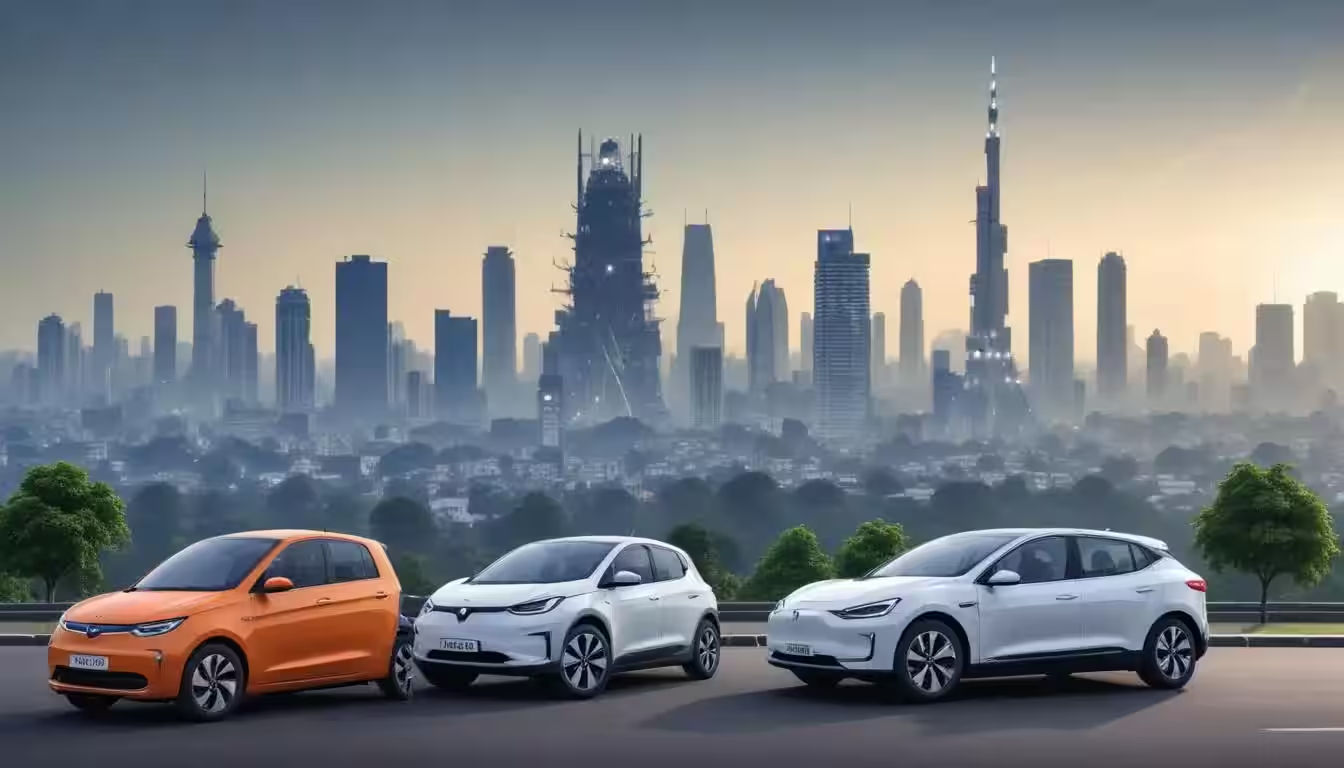
Which are the Primary Batteries of Electric Cars in India?
As you learn the crash course on electric vehicle (EV) market in India that is already in booming stage,then one of the most important decisions that would have to be arrived at would be the type of battery. The battery of your EV will not only affect the duration of your trips, but also the costs that you must pay on the purchase and maintenance of the car and the carbon cost of your transportation. By 2025, three battery types currently dominate the EV ecosystem both in India and around the globe and they consist of their own costs and benefits:
- Li-ion Batteries: The best models of EVs existing in India today use the Li-ion battery model. It is assumed that it has high energy density, medium cost and satisfactory life.
- Nickel Metal Hydride (NiMH) Battery: to small to use in 2025 and still used in some hybrid vehicles.
- Lead Acid Batteries: Hat is by far the oldest type and very widespread in e-rickshaws and cheap e-bikes.
You were not told?
Electric two-wheelers and cars- Greater than 90 per cent of new cars and electric two-wheelers in India by 2025 will have lithium-ion batteries, in contrast to 2018 when they were dominated by lead acid ones.
The following is a review of these types of batteries and which ones would be most appropriate to our Indian environment.
Why Should The Kind of Battery be Important when you will purchase an Electric Vehicle in India?
The right choice of battery may alter much in your everyday one-on-one driving experience and overall savings. These are the reasons why battery types are important to you:
- Range: Estimates the distance that it has the capabilities to cover in a single charge.
- Charging Speed: At what rate can one conveniently charge the device and/or create a schedule.
- The cost: Generate a difference on the initial cost and savings in the longterm perspective.
- Lifespan: It will determine how many replacements you should do in a particular period of time.
- Safety: Some batteries are safer to some degree than others in Indian weather.
- Recycling and Disposal: This alters the environmental-friendliness of your car.
- Government Subsidy- Eligibility: Electric cars can enjoy FAME II and state subsidies on some batteries.
Expert Insight
Higher subsidy level provided by the Indian government on Lithium ion battery EV in 2025 is advantageous compared to that of lead acid battery; hence it not only acts as an improved performer but also costs less to purchase.
EV Policy Analyst, Niti Aayog
What are the most popular Indian Electric Vehicle Batteries in 2025?
Here is a quick guide on the most popular battery types you will find in Indian EVs in 2025:
Lithium-Ion (Li-ion) Batteries
The most common in electric cars, bicycles and scooters.
Some of the Sub types are LFP (Lithium iron phosphate), NMC (Nickel Manganese Cobalt) and NCA (Nickel Cobalt Aluminum).Li-Po Batteries
A low-volatile version of Li-ion, which is used in luxury EVs, allows more flexibility in shape.NiMH Batteries
Appears on some imported hybrid, and rare on full electric.Lead Acid Batteries
The lowest priced motors are still used in entry level rickshaw and very cheap bikes; low in cost and high in weight, low life.
You had not known?
According to one report in 2024, the lithium-ion battery market in India is estimated to reach ER 500 billion by 2025 as electric vehicles gain adoption at a rapid rate and facilitated by government purposes.
How Do The Different types Of the Battery Compare As far As their Performance and Cost Go?
On bitter numbers? This can be divided into battery types used in Indian EVs 2025:
| Battery Type | Typical Range (km) | Lifespan (years/charge-cycles) | Cost (per kWh, $) | Charging Time (80%) | Weight (kg) | Safety | Used In (India, 2025) | Subsidy Eligible |
|---|---|---|---|---|---|---|---|---|
| NMC Lithium-Ion | 150–1500 | 8–10 / 2000+ | 13000–15000 | 1–2 Hours (fast) | Medium | High | Tata Nexon EV, Ola S1 Pro | Yes |
| Lithium-Ion (LFP) | 100–400 | 10–12 / 3000+ | 12000–14000 | 1.5–2.5 hours | High | Very High | MG ZS EV, BYD e6, Ather 450X | Yes |
| Li-Po Lithium polymer | 120–400 | 7–9 / 1500+ | 15000–18000 | 1–2 hours | Low | High | High end EV city scooters | Yes |
| Nickel Metal Hydride | 80–200 | 6–8 / 1000+ | 9000–11000 | 2–4 hours | High | Medium | Imported hybrids | No |
| Lead Acid | 40–100 | 2–3 / 400 | 7000–8000 | 4–7 hours | Very High | Low | E-rickshaws, low cost e-bikes | No |
In-Depth Comparison
Lithium Nickel Manganese Cobalt Oxide (NMC)
Lightweight to middleweight electricity density.
Tradeoff cost, security and longevity.
Wanted model of two most selling Indian EVs namely Tata Nexon EV and Ola S1 Pro.LFP (Lithium Iron Phosphate)
In terms of range, it is quite competitive but safest within the society.
Long life; the possibility of overheating is lesser, the adaptation to the Indian climate is perfect.
Applied to Ather 450X, MG ZS EV, BYD e6.Li-Pol or Lithium Polymer
Thin and flexible in shape.
Being implemented in scooters of a more advanced model (example: high-end models of Okinawa and Pure EV).NiMH
Not as common; it is possible to find them in the imported hybrids, like Toyota Camry Hybrid.Lead Acid
Least Cost; long range, short, heavy and long lasting.
The standard motor fitted in e-rickshaw and low cost e-bikes.
In 2025, will not qualify to most government incentives.
Outline of the Advantages and Disadvantages
NMC/LFP Li-Ion
Pros: Long life (8–12 years), fast charging, high energy density, government grants, good performance in Indian conditions.
Cons: More costly than lead acid, requires temperature control system.Lithium Polymer
Pros: Lightweight, flexible design, good for small scooters.
Cons: Expensive, weaker compared to NMC/LFP.NiMH
Pros: Reasonable lifespan, better than lead acid in hybrids.
Cons: Rare in India, lower energy density.Lead Acid
Pros: Low upfront cost, established recycling.
Cons: Heavy, short life, frequent replacements, no subsidies in 2025.
Expert Insight
In India, in 2025, the majority of people driving in an EV in a city will have selected LFP batteries because of their safety, endurance and favor by the state. All low-speed applications no longer economically can use lead acid batteries just in low-cost applications.”
Battery Tech Lead, Ather Energy
What are the implications in EV running costs and maintenance in India of battery choices?
Lithium-Ion (NMC/LFP)
Higher upfront cost but lasts 2–5 times longer than lead acid.
Lower per-km running cost over 8–12 years.
Minimal maintenance required.
OEM warranties in 2025: 8 years / 1.6 lakh km.Lead Acid
Low initial cost.
Requires frequent maintenance (water top-up, cleaning terminals).
Replacement needed every 2–3 years.Lithium Polymer
Similar upfront cost to Li-ion but higher replacement cost.
You didn’t know?
Even after adjusting the initial difference in prices, the Indian EV consumer saves between 1 to 1.5 lakh over 8 years between lithium-ion battery and lead acid battery, studies showed.
Which Battery is more environmental friendly and safer to Indian conditions?
LFP (Lithium Iron Phosphate)
Safest, least risk of fire, excellent for Indian heat.
Recyclable, free of toxic heavy metals.NMC
Safe with proper thermal management, recycling industry is developing.Lead Acid
High pollution risk, leakage issues in monsoon, unsafe.NiMH
Moderate safety, limited recycling ecosystem.
Expert Insight
Also, under Indian laws, all EV batteries should be gathered until 2025, and the very first plants in the state of Gujarat and Karnataka should be established to take control of the proper disposal of batteries.
Central Pollution Control Board report
What is the real-world Indian user experience using several different kinds of EV batteries?
- LFP user (Ather 450X): 40,000 km in 3 years, only 8% capacity loss, no overheating.
- Nexon EV (NMC): Fewer maintenance issues, 20% subsidy support.
- Lead acid rickshaw: Cheap but batteries replaced every 18 months.
- NMC scooter: Good performance, reliable fast charging.
You did not know?
According to survey by SIAM 2025, 85 percent of consumers that own lithium-ion based EV were satisfied with the perceived safety and battery life to only 50 percent of lead acid EV owners.
How is Government involvement achieved through Indian Government inowering EV Battery adoption and innovation?
- FAME II Subsidies: Only lithium-ion (NMC, LFP, Li-Po) eligible, up to ₹10,000 per kWh subsidy.
- PLI Schemes: Domestic battery manufacturing encouraged in Tamil Nadu, Gujarat, UP.
- Battery Swapping Policies: Standardization promoted for e-rickshaws.
- Recycling Regulations: Mandatory collection and recycling of all EV batteries.
Expert Insight
Due to the initiative of Make in India and PLI program, the prices of lithium-ion batteries in India have dropped by nearly 30 percent in 2022-2025 and now modernized EVs became accessible to a greater number of Indians.
FICCI - TBM - EV Industry Analyst, FICCI
Cascading Effect What Indian EV models will use batteries in 2025?
| Model | Type | Battery Type | Range (km) | Warranty (Years/km) | Fast Charging | Subsidy Eligible | Price (₹, ex-showroom) | Assembled in India? |
|---|---|---|---|---|---|---|---|---|
| Nexon SUV EV | SUV | NMC | 465 | 8/1,60,000 | Yes | Yes | 14,99,000 | Yes |
| MG ZS EV | SUV | LFP | 411 | 8/1,50,000 | Yes | Yes | 18,98,000 | Yes |
| BYD e6 | MPV | LFP | 520 | 8/1,50,000 | Yes | Yes | 29,15,000 | Yes |
| Ola S1 Pro | Scooter | NMC | 195 | 8/80,000 | Yes | Yes | 1,29,999 | Yes |
| Ather 450X | Scooter | LFP | 150 | 5/60,000 | Yes | Yes | 1,44,999 | No |
| TVS iQube | Scooter | NMC | 100 | 3/50,000 | Yes | Yes | 1,25,000 | Yes |
| Hero Electric Optima | Scooter | Lead Acid/Li | 82 (Li-ion) | 2/30,000 | No | Li-ion only | 67,190 (Li-ion) | Yes |
| Mahindra eVerito | Sedan | NMC | 181 | 3/36,000 | No | Yes | 12,30,000 | Yes |
| Okinawa Okhi90 | Scooter | NMC | 160 | 3/40,000 | Yes | Yes | 1,86,000 | Yes |
| E-Rickshaw (Generic) | 3-Wheeler | Lead Acid | 60–90 | 1/12,000 | No | No | 1,00,000 | Yes |
But what are the factors you should consider to choose the best battery charging requirements to power your electric vehicle in India?
- Daily commute needs: 80–150 km (city), 300+ km (intercity).
- Subsidy eligibility: Only lithium-ion qualifies.
- Charging infrastructure: Fast charging better in cities.
- Safety: Prefer LFP with BMS in Indian summers.
- Budget planning: Li-ion gives lower long-term cost.
- After sales support: Warranty and service matter.
- Sustainability: Prefer companies with recycling programs.
Expert Insight
In 2025, LFP battery with its longer life and safety will pass any city commuter as the happiest user. Make your initial cost as low as possible and only now should you consider choosing pick lead acid at all.
SIAM Consultant, EV Market
What will be the Verdict? Which Lithium-ion Battery will you choose to operate your Indian EV 2025?
- Best All-Round Option: LFP or NMC lithium-ion.
- Best under Budget: Lead acid (only for rickshaws or low-cost bikes).
- Best Premium/Custom: Lithium polymer for stylish lightweight scooters.
By 2025, all new electrical vehicles in India which are subsidized and can be used in large quantities in the urban environment, have lithium-ion batteries (LFP or NMC).
Conclusion
Your battery selection is the defining moment of getting your electric vehicle in India 2025. When government policies, market trends, and the physical experience of using the batteries point to use of Lithium-ion (especially LFP and NMC) batteries, there is a solid ground to make a smart and forward-looking investment. Do not be in a rush in order to target your daily needs, you should analyse the available models, then buy a product of a reputable company with superior after sales.
Join EV revolution? Choose a new lithium-ion battery, deploy federal program incentive and drive to a greener future.
What are the FAQs on EV Battery India (2025)?
Q1. Does lithium-ion batteries remain safe under Indian weather?
A1. This is the case more so with LFP batteries, due to their thermal stability. It has a battery management system (BMS) to provide extra safety in all good EVs that are sold in India nowadays.
Q2. What is the cost in india to replace an EV battery in 2025?
A2. Cars- 2-2.5 lakh (Li-ion), scooters 40,000-60000. These costs are also reducing year over year due to the production at home and PLI schemes.
Q3. Will all EVs currently on sale be eligible to FAME II subsidies in 2025?
A3. Only those that have lithium-ion (NMC, LFP, Li-Po) based batteries. Non- Lebanese vehicles using lead-acid are prohibited.
Q4. Can old lead acid e-rickshaw be up-graded to lithium-ion?
A4. In fact a variety of conversion kits are available now but first theory local RTO can be consulted after which conversion should be done with legal and warranty implications.
Q5. What is the life cycle of Indian EVs battery-driven by lithium-ion batteries?
A5. The average life is normally 8–12 years or a distance of 1.5–2 lakh km, subject to use and maintenance.
This guide uses only the latest (2025) Indian data and policies. Please check with your EV manufacturer or local dealership for the most accurate, up-to-date information before making your final decision.


